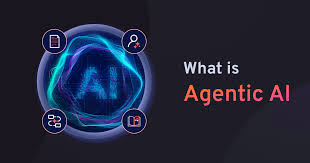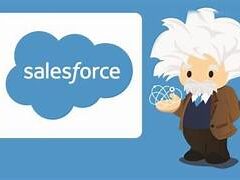The rise of agentic AI has dominated recent discussions in enterprise technology, sparking debates over its transformative potential and practical applications. Just weeks ago, few had heard of the term. Now, every tech vendor is racing to stake their claim in this emerging space, positioning agentic AI as the successor to AI co-pilots. While co-pilots assist users with tasks, agentic AI represents the next step: delegating tasks to intelligent agents capable of independent execution, akin to assigning work to a junior colleague.
But beyond the buzz, the pressing questions remain:
- What meaningful solutions will enterprises build with agentic AI?
- What hidden pitfalls should they anticipate?
- And how long will this trend hold before being eclipsed by the next innovation?
Cutting Through the Hype
Recent launches provide a snapshot of how enterprises are beginning to deploy agentic AI. Salesforce’s Agentforce, Asana’s AI Studio, and Atlassian’s Rovo AI Assistant all emphasize the ability of these agents to streamline workflows by interpreting unstructured data and automating complex tasks. These tools promise flexibility over previous rigid, rule-based systems. For example, instead of painstakingly scripting every step, users can instruct an agent to “follow documented policies, analyze data, and propose actions,” reserving human approval for final execution.
However, the performance of these agents hinges on data quality and system robustness. Salesforce’s Marc Benioff, for instance, critiques Microsoft’s Copilot for lacking a robust data model, emphasizing Salesforce’s own structured approach as a competitive edge. Similarly, Asana and Atlassian highlight the structured work graphs underpinning their platforms as critical for accurate and reliable outputs.
Key Challenges
Despite the promise, there are significant challenges to deploying agentic AI effectively:
- Reliability vs. Flexibility
Enterprises demand deterministic workflows, where outcomes are predictable and reproducible. Generative AI introduces probabilistic reasoning, which can make outcomes harder to predict. Vendors like UiPath and Salesforce are actively working to align generative capabilities with the reliability required for enterprise contexts. - Vendor Lock-In
Enterprises adopting agentic AI often rely on a vendor’s proprietary data models and automations. While this may not feel restrictive in the SaaS era, it limits flexibility, particularly when integrating across multi-application environments. - Integration Gaps
Cross-functional, multi-application workflows remain a work in progress. Integration vendors like Boomi are exploring centralized agent repositories to manage and coordinate agents, but this area is still evolving. - Misaligned Processes
A bigger concern is automating outdated or inefficient processes. Without rethinking workflows, enterprises risk using AI to entrench existing inefficiencies rather than driving real transformation.
Early Wins and Future Potential
Early adopters are seeing value in high-volume, repetitive scenarios such as customer service. For example:
- Salesforce highlighted how Agentforce enabled Wiley and Opentable to reduce workload in call centers.
- Atlassian and Asana showcased use cases where agentic AI improved prioritization, streamlined internal processes, and reduced project timelines.
However, these successes represent low-hanging fruit. The true promise lies in rethinking how enterprises work. As one panelist at Atlassian’s event noted:
“We shouldn’t just use this AI to enhance existing processes. We should ask whether these are the processes we want for the future.”
The Path Forward
The transformative potential of agentic AI will depend on broader process standardization. Just as standardized shipping containers revolutionized logistics, and virtual containers transformed IT operations, similar breakthroughs in process design could unlock exponential gains for AI-driven workflows.
For now, enterprises should:
- Focus on Data Foundations: Ensure clean, structured, and actionable data to maximize the utility of agentic AI.
- Seek Quick Wins: Use agentic AI to address immediate inefficiencies in existing workflows.
- Anticipate Standards: Stay attuned to emerging standards in process automation that will shape long-term innovation.
Conclusion
Agentic AI holds immense potential, but its real power lies in enabling enterprises to question and redesign how work gets done. While it may still be in its early days, businesses that align their AI investments with strategic goals—and not just immediate fixes—will be best positioned to thrive in this new era of intelligent automation.













